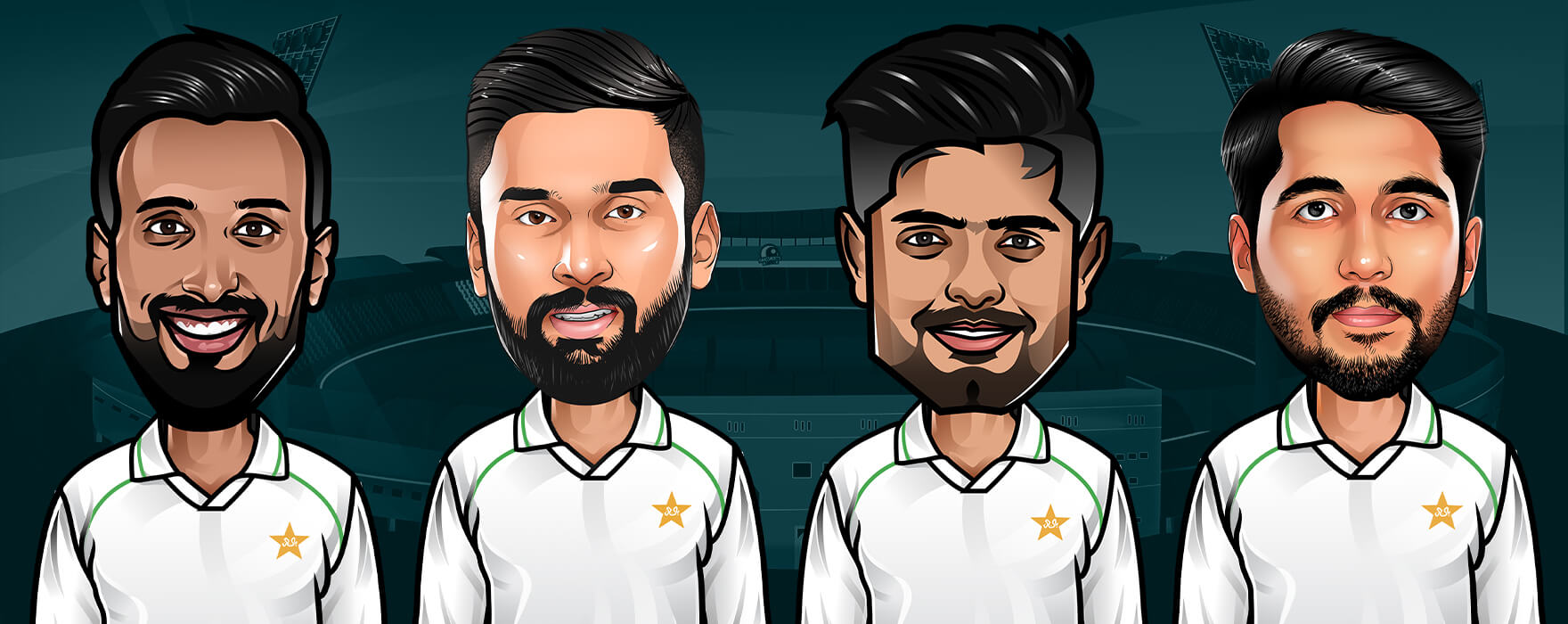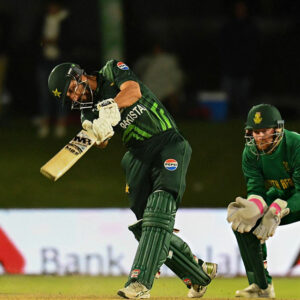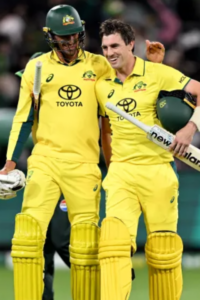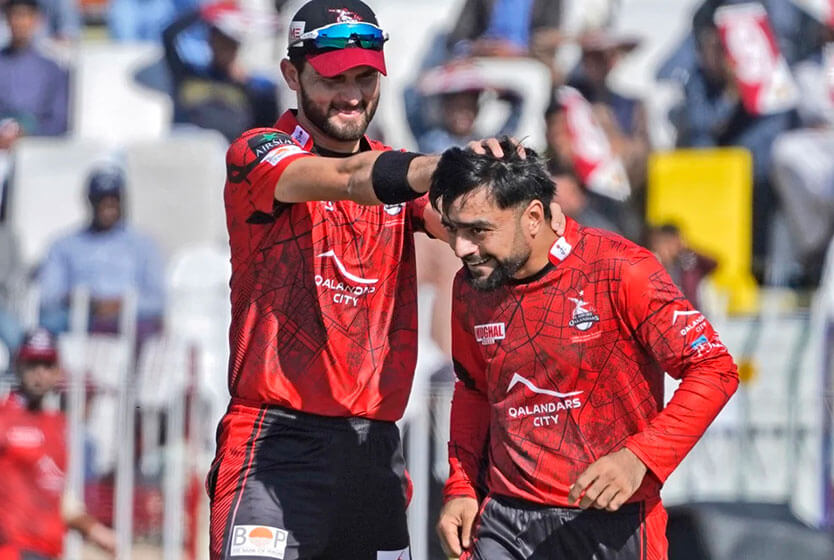
Pakistan’s Attempt to Solve the Number 6 Problem Before the 2023 World Cup
With time running out before the mega-event in India, Pakistan are scrambling to find a last-minute solution.
Number 6 is a very vital position in all formats of the game, even though the requirements are vastly different depending on the format. Since we’re in the ODI World Cup year, it’s time to focus on the ODI format, and specifically Pakistan’s attempts to figure out the middle order. Guess who scored the most runs at that position in the last World Cup? It was Jos Buttler with 235 runs @ 39 with a strike rate of 119. In the 2015 World Cup, Glenn Maxwell scored 100+ runs in this position at a strike rate of over 150. We can go all the way back to 1983 even; then, it was Kapil Dev who scored the most runs at a healthy strike rate of 114, including a historic 175*. Andrew Symonds’ brutal assault on Pakistan in the 2003 World Cup came from number 6; from 86/4, he smashed a belligerent 143* to turn the match on its head. All these batters were from World Cup-winning sides, and this is why the number 6 is significant for a team to succeed at this mega event.
As ODIs shift to the modern cricketing trend, the importance of this role keeps increasing. In the book Hitting Against the Spin by Ben Jones & Nathan Leamon, they describe modern-day ODI batting as a cycling track, which is a downward slope at the start, straight afterward, and then an upward slope at the end. This shows us that batting in ODIs gets progressively harder over the course of the 50 overs.
Pakistan’s Number 6s
Since the last World Cup, Iftikhar Ahmed is the only Pakistan batsman to face more than 100 balls at Number 6, doing decently with 119 runs at a strike rate of 102. However, he has only played 8 of Pakistan’s 23 ODIs in this period, showing that Pakistan has dug itself into a bit of a hole yet again before a major event by not giving someone a regular chance to settle down in this tough position.
Pakistan has played 10 batters at Number 6 in these 23 ODIs, including the likes of Hasan Ali and Asif Ali. If we judge by batting position only, Shadab Khan, Salman Ali Agha, and Iftikhar Ahmed have fared well in the limited amount of chances provided at number 6. Iftikhar, with 7 innings, is the only one to have played more than 3 innings in this position during this period.
Haris Sohail has mostly batted at number 4 or 5 in his ODI career, sometimes even at 3, so he is a very unlikely candidate for that number 6 position. Shadab Khan and Mohammad Nawaz have also batted at these kinds of positions, although more as floaters rather than regular options, with only Shadab making use of those opportunities. The batting order can be dynamic with one eye on the entry point; Shadab Khan and Mohammad Nawaz are the kind of batters that can be given around 5-10 overs to go all out.
Possible Options for the World Cup
Mohammad Haris
Before the recently concluded New Zealand T20I series, in a pre-series press conference, Babar Azam was asked about the T20 middle order of Pakistan and its flexibility. Babar, in his reply, stated: “In youngsters ki achi baat yeh hai keh ye number ka nahi sochtay.”Essentially, he pointed out that the upcoming generation of Pakistani batters, including Haris, do not really fixate on specific batting positions.
Even though Babar was talking about T20s only, Mohammad Haris has very different roles across both white-ball formats. He is known for his aggressive method of batting in the top order in T20s, while in the 50-over format, he usually bats in the middle order. Coming through the Under-19 system, he regularly batted in the middle order. Then, in the last 2 Pakistan Cups, he batted at numbers 5, 6, and 7, with 4, 10, and 3 innings at each position, respectively. While the Pakistan Cup isn’t a very strong competition nowadays, with most top players being unavailable, Haris definitely has had some exposure to the middle-order role.
However, is it too much to expect a finisher/number 6 batter to play in the world’s biggest cricketing event without much prior ODI experience? One possibility would be giving Shadab Khan more responsibility with the bat, in this case, allowing Haris to play a freer role at number 7.
Iftikhar Ahmed
Iftikhar Ahmed has been in really good T20 form for the last 6-12 months, excluding this year’s PSL, and he is the most experienced batter in this role among the current lot. He has also led his domestic team Khyber Pakhtunkhwa in various tournaments and has played a crucial role in their success.
However, he has apparently fallen out of favor for ODIs, possibly due to the recent influx of young batters. One of the reasons for dropping him might be his issues against playing spinners with one eye on the World Cup later this year in India. He also had a really forgetful series against Australia, and it proved to be his last one so far.
Still, he is far more experienced and accustomed to different conditions and situations, having played over 100 List A games and averaging 48.65, among the top 20 highest List A averages of all time (minimum 100 matches). His recent performances indicate that he’s going through a purple patch, and he also has good performances in last year’s World Cup to demonstrate that he can perform on the big stage.
Khushdil Shah
Pakistan hasn’t had many fan-favorite middle-order batsmen since Shahid Afridi and Abdul Razzaq. However, if there were to be a list, Khushdil Shah would probably feature near the bottom. Last year, the left-hander faced disgraceful behavior from home crowds in a T20 series against England, that too without any strong and compelling reason besides a few struggles.
While Iftikhar may be the most experienced Pakistani for this role, Khushdil isn’t far behind him in terms of exposure. He might even be ahead of him in terms of performance, having won Pakistan matches in crucial situations against Australia and West Indies.
If we talk about Khushdil’s domestic record, he has had an illustrious List A career so far, with an average of over 40 and a strike rate in the mid-90s. Having played almost 90 games with 2800+ runs to his name, he definitely has the experience required.
However, in the last two editions of the Pakistan Cup, Khushdil only scored 344 runs at a strike rate of 83. He then also struggled in the latest season of the PSL. Thus, while he might have been unfairly dropped from ODIs, he hasn’t really made a strong case for a comeback. It’s also likely that the poor treatment from fans has severely dented his confidence, unfortunately.
Salman Ali Agha
Against the Netherlands, Salman Ali Agha played his debut ODI and entertained the pundits with some fiery cameos. The reason behind his debut was his strong domestic performances. His bowling also makes him a rather critical member of Pakistan’s attack
Even though he has not played PSL for 2 years, he was still selected for ODIs, showing that he does have the capability to accelerate. In the last 3 Pakistan Cups, his strike rate is the fifth highest among players with 100+ runs, and he showed that ability to accelerate against New Zealand in the home ODI series earlier in the year; overall, he has played at number 6 in 3 ODIs and has performed decently.
However, it is generally acknowledged that Agha is stronger against spin than pace, although he has stated in recent interviews that he feels he has improved against pace and is now quite strong against it. Still, his domestic record indicates a significant disparity while he’s batting in the top 5, averaging around 45, while his record at 6 and below is much poorer (averaging around 20).
One situation where he may end up at 6 is if Abdullah Shafique or Haris Sohail are preferred higher up the order, leaving no room for him in the top 5.
Imad Wasim
An outside contender for the number 6 position could be Imad Wasim. The left-hander has a strong record with the bat in ODIs, having scored almost 1000 runs @ 43 with a strike rate of 110. He is also having an excellent year with the bat in T20s, among the top 10 run-scorers in the format so far this year with 600+ runs at an average of 50 with a strike rate of 139.
What goes against him, however, is the lack of match practice in the 50-over format. Imad played just 8 List A matches last year, and besides that, he has played no 50-over games since being discarded from the ODI setup. Thus, there might be concerns about his fitness and his ability to bat and field for longer periods.
Another unintended consequence of his inclusion might be the team management viewing him as competition for Mohammad Nawaz’s spot rather than the number 6 position. However, Nawaz has a much stronger ODI bowling record, with his style of bowling far more suitable for the format than Imad’s. Thus, it’s unlikely that he would lose his spot to Imad.
Conlusion
As pointed out earlier, number 6 is a very crucial option in any ODI team’s success, especially in World Cups. Pakistan has gone into the 5-match ODI series with a very odd batting composition. There are 7 batters who bat in the top 4 mostly, while it looks like Salman Ali Agha is going to be the number 6 batter. However, Mohammad Haris has been included in the squad as a late addition and might now become an option as well. Additionally, there is a growing demand on social media to include Iftikhar Ahmed in the squad. Whoever is chosen must be given maximum opportunities to establish himself in that position, with time fast running out: Pakistan are scheduled to play just 8 ODIs before the Asia Cup and World Cup.
The opinions expressed solely belong to the writer and do not necessarily reflect the views of Grassroots Cricket.







Leave a Reply